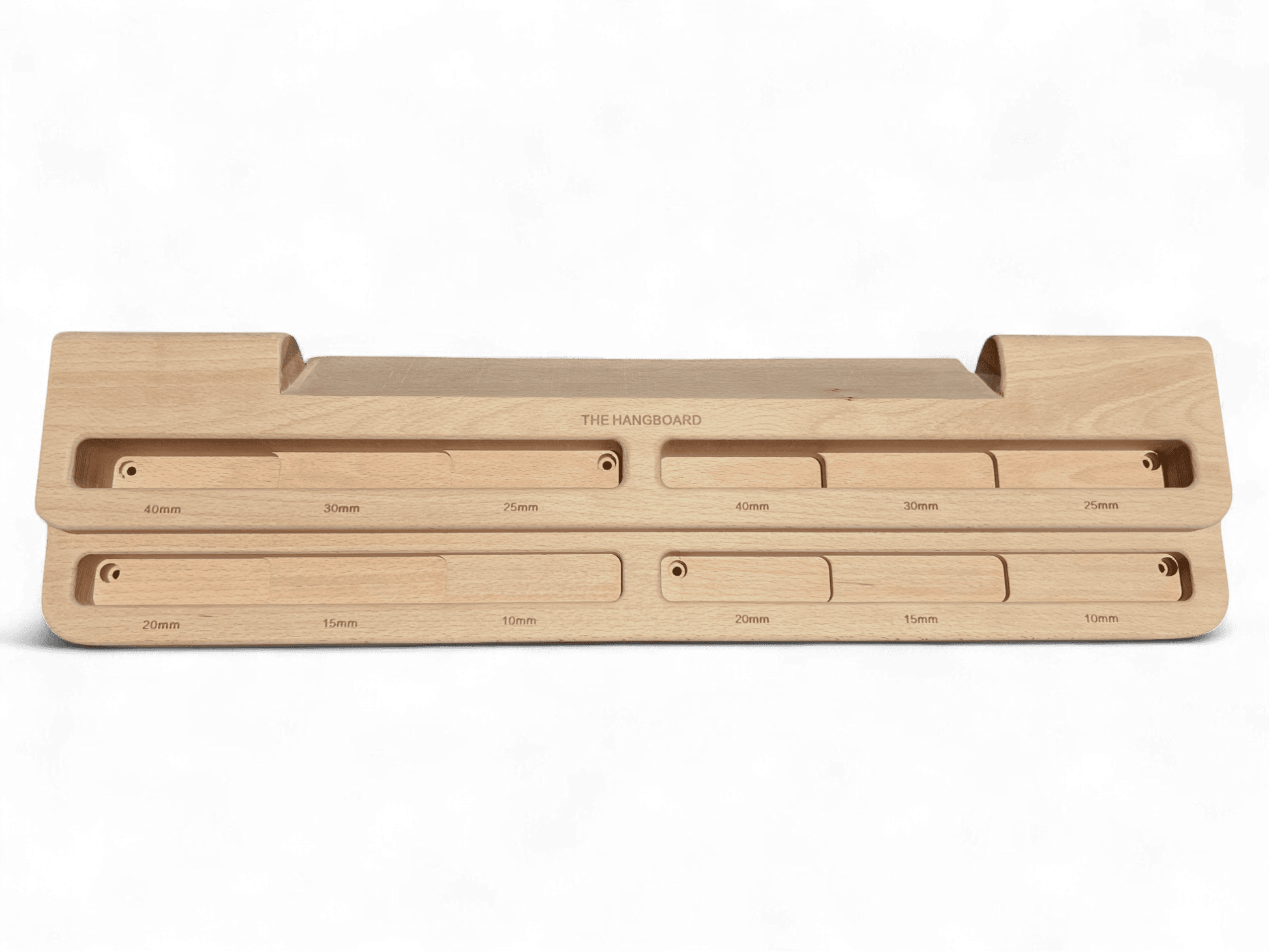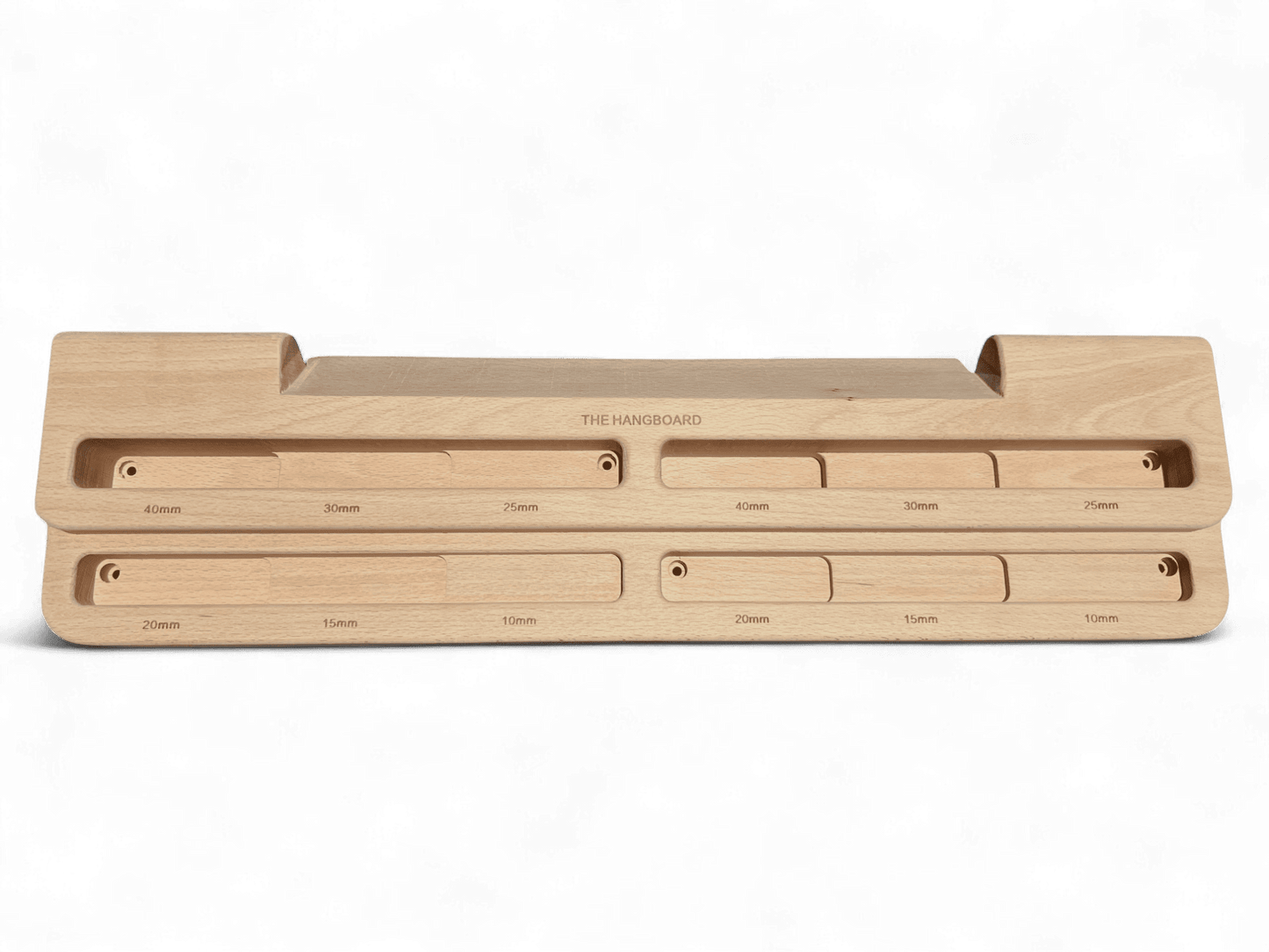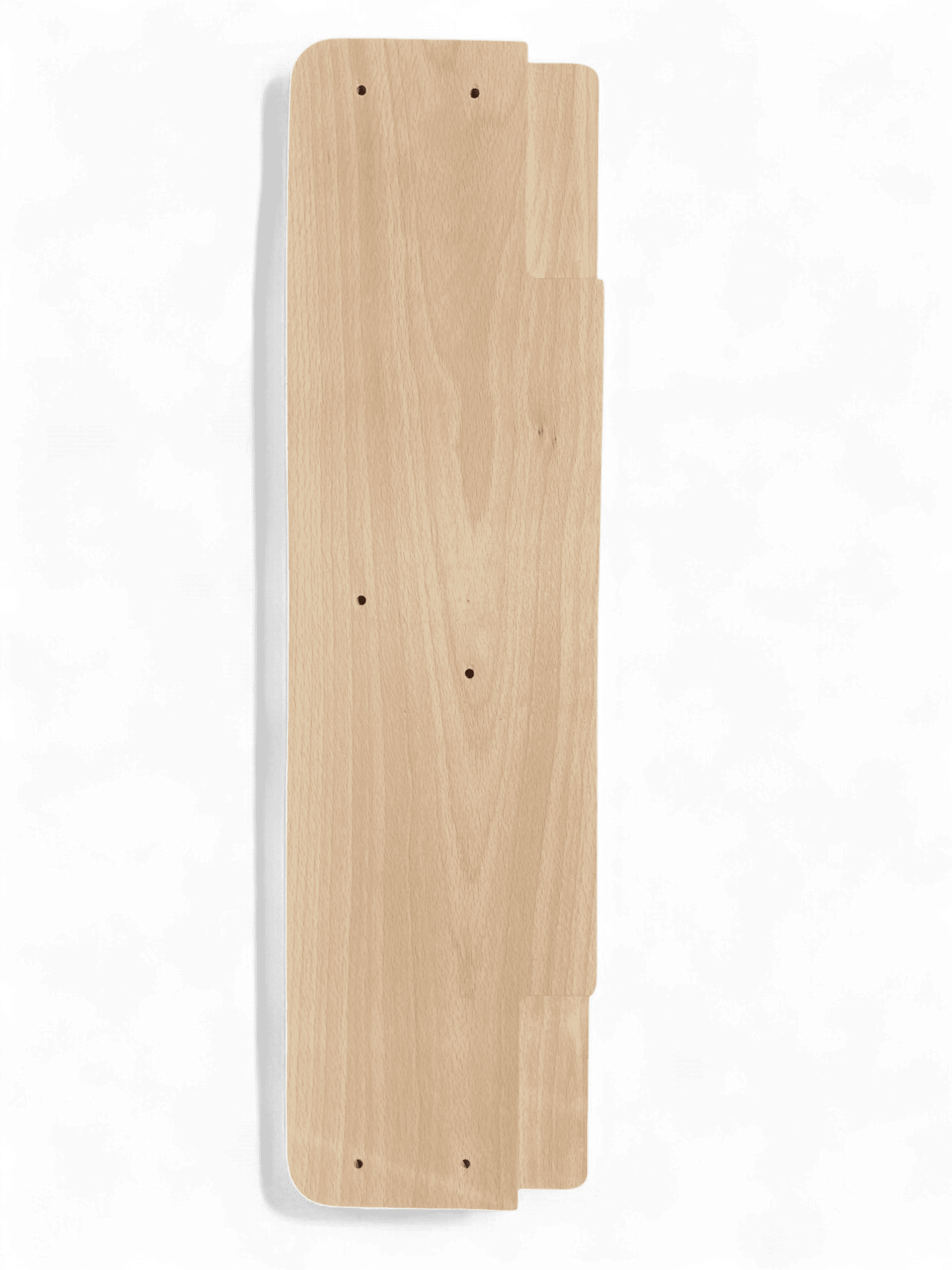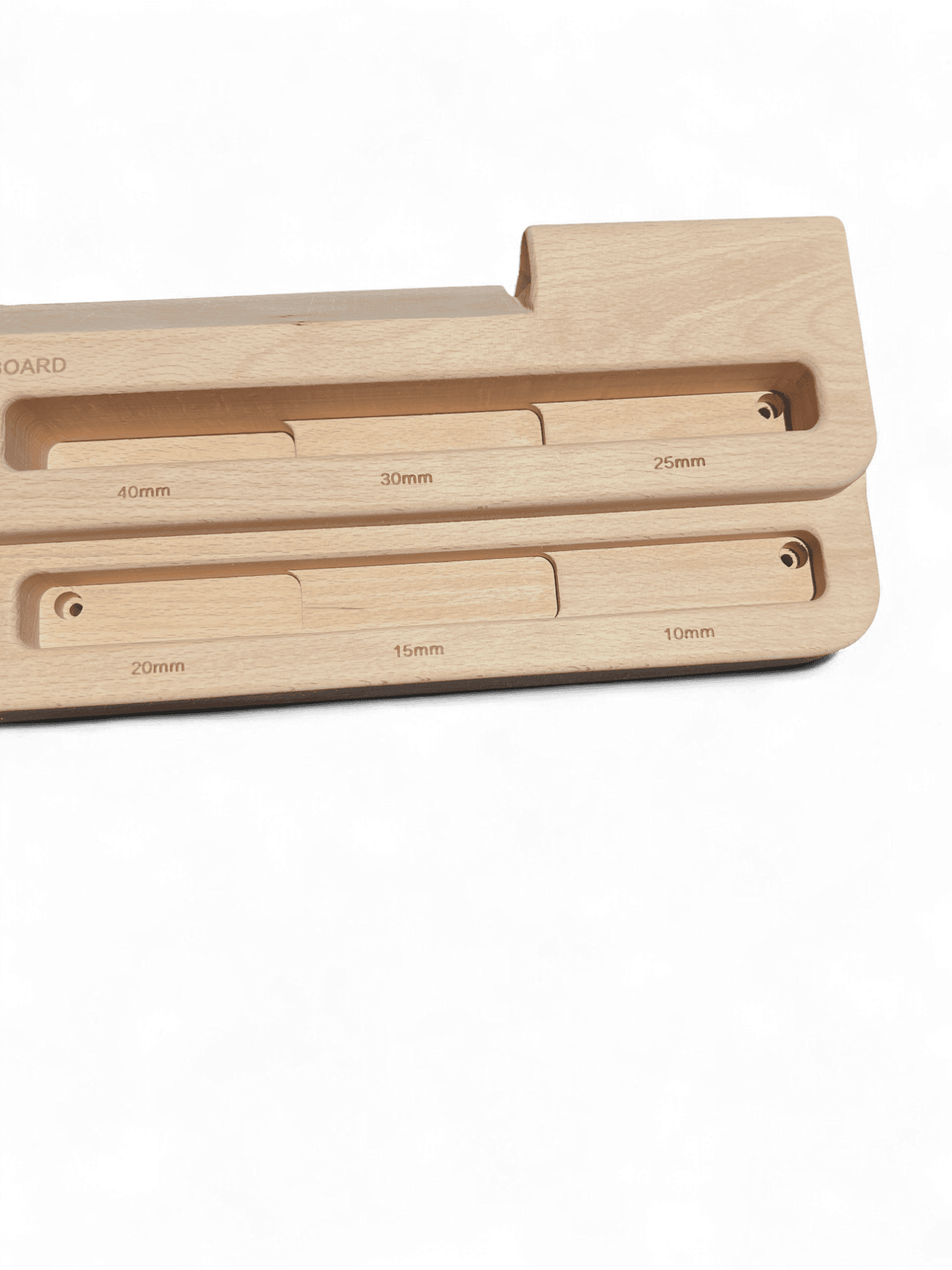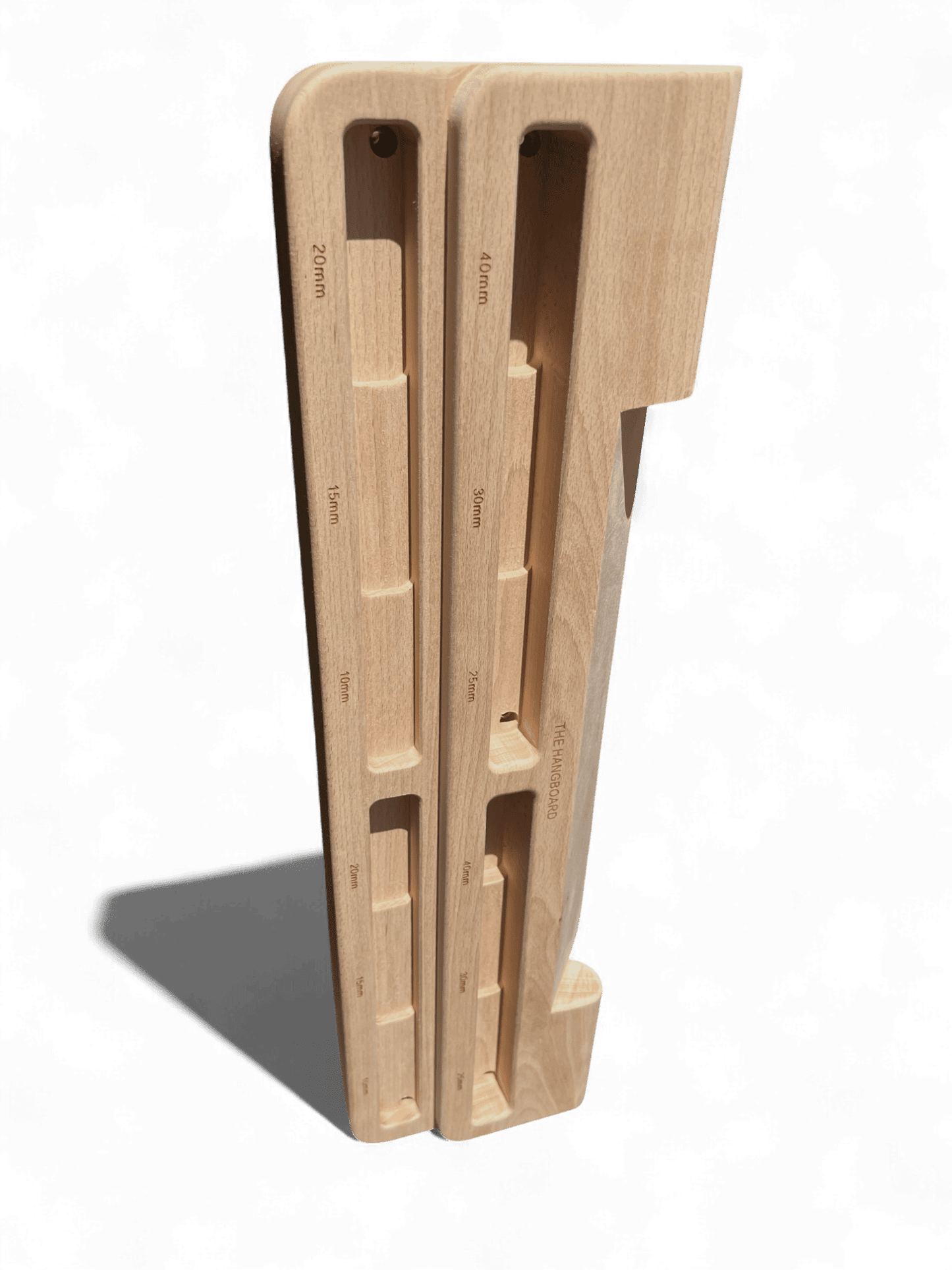What is the Ape Index?
The Ape Index compares an individual's arm span to their height. It's a term well-known in climbing circles and is often brought up when discussing physical advantages in the sport. The concept harks back to Leonardo da Vinci's "Vitruvian Man," which suggested the ideal human proportion where the arm span equals height, a perfect ratio of 1:1.
How to Measure and Calculate Your Ape Index
To find your ape index, simply extend your arms and measure from the tip of one middle finger to the other for your arm span, and from your feet to the top of your head for your height.
Calculating your Ape Index can be done in two ways:
- Division Method: Here, you divide your arm span by your height. An index of 1 indicates that your arm span and height are equal, which is considered average.
- Subtraction Method: This method involves subtracting your height from your arm span. A positive value suggests a longer arm span relative to your height, which is perceived as advantageous in climbing.

Ape Ratio
The term ape ratio is another way of describing what climbers often refer to as the ape index. It measures the difference between your arm span and your height, offering a quick reference for your natural reach advantage. A positive ape ratio means your wingspan is longer than your height, which can be beneficial in climbing when reaching for distant holds. While "ape index" is the more commonly used term in climbing circles, "ape ratio" is essentially the same thing — just another name for the same useful measurement. Whether you're calling it ape index or ape ratio, knowing your number can help you better understand how your body mechanics might influence your climbing style.
Advantages and Disadvantages of Different Ape Index Values
A positive Ape Index, where your arm span exceeds your height, is often seen as beneficial in climbing. It can aid in reaching farther holds and maneuvering challenging routes. However, scientific research presents a mixed view. While a higher Ape Index might offer some advantages, especially for beginners, other factors like technique, strength, and experience play significant roles in a climber's success.
The Vitruvian Man and the Perfect Ratio
Da Vinci's Vitruvian Man implies that a 1:1 ratio between arm span and height is ideal. In climbing, however, this 'perfect' ratio may not necessarily confer any specific advantage. Each climber's body type presents its unique challenges and benefits in the sport.
Trainable Factors in Climbing
While the Ape Index provides an interesting perspective on physical attributes, climbing is a multifaceted sport where trainable factors often outweigh genetic advantages. Strength, flexibility, technique, and experience are critical components that determine climbing proficiency. These factors can be developed and refined over time, offering every climber, irrespective of their Ape Index, the opportunity to excel.
Magnus Midtbø Ape Index
Adam Ondra Ape Index
Alexander Megos Ape Index
Alberto Ginés López Ape Index
Tomoa Narasaki Ape Index
Alex Honnold Ape Index
Chris Sharma Ape Index
Wolfgang Güllich Ape Index
Lynn Hill Ape Index
Ashima Shiraishi Ape Index
Alex Puccio Ape Index
Janja Garnbret Ape Index
Brooke Raboutou Ape Index
Tommy Caldwell Ape Index
Nalle Hukkataival Ape Index
Daniel Woods Ape Index
Kai Lightner Ape Index
Sasha DiGiulian Ape Index
Jimmy Webb Ape Index
Paul Robinson Ape Index
Matt Fultz Ape Index
Ethan Pringle Ape Index
Dave Graham Ape Index
Jongwon Chon Ape Index
Kai Harada Ape Index
Jonathan Siegrist Ape Index
Sascha Lehmann Ape Index
Kyra Condie Ape Index
Emily Harrington Ape Index
Hazel Findlay Ape Index
Angy Eiter Ape Index
| Climber | Wingspan | Height | Ape Index |
|---|---|---|---|
| Magnus Midtbø | 176 cm, 5 ft 9 in | 173 cm, 5 ft 8 in | +3 cm, +1.2 in |
| Adam Ondra | 187 cm, 6 ft 2 in | 186 cm, 6 ft 1 in | +1 cm, +0.4 in |
| Alexander Megos | 173 cm, 5 ft 8 in | 173 cm, 5 ft 8 in | 0 cm, 0 in |
| Alberto Ginés López | unknown | 168 cm, 5 ft 6 in | unknown |
| Tomoa Narasaki | 180 cm, 5 ft 11 in | 170 cm, 5 ft 7 in | +10 cm, +3.9 in |
| Alex Honnold | 188 cm, 6 ft 2 in | 180 cm, 5 ft 11 in | +8.5 cm, +3.1 in |
| Chris Sharma | 189.2 cm, 6 ft 3 in | 182.9 cm, 6 ft 0 in | +6.3 cm, +2.5 in |
| Wolfgang Güllich | unknown | 178 cm, 5 ft 10 in | unknown |
| Lynn Hill | unknown | 157 cm, 5 ft 2 in | unknown |
| Ashima Shiraishi | 164 cm, 5 ft 5 in | 154 cm, 5 ft 1 in | +10 cm, +3.9 in |
| Alex Puccio | 162 cm, 5 ft 4 in | 157 cm, 5 ft 2 in | +5 cm, +2.0 in |
| Janja Garnbret | unknown | 164 cm, 5 ft 5 in | unknown |
| Brooke Raboutou | 160 cm, 5 ft 3 in | 158 cm, 5 ft 2 in | +2.5 cm, +1.0 in |
| Tommy Caldwell | 178 cm, 5 ft 10 in | 178 cm, 5 ft 10 in | 0 cm, 0 in |
| Nalle Hukkataival | 174 cm, 5 ft 9 in | 173 cm, 5 ft 8 in | +1.3 cm, +0.5 in |
| Daniel Woods | 182.9 cm, 6 ft 0 in | 172.7 cm, 5 ft 8 in | +10.2 cm, +4.0 in |
| Kai Lightner | 208 cm, 6 ft 10 in | 190.5 cm, 6 ft 3 in | +17.5 cm, +6.9 in |
| Sasha DiGiulian | 162.6 cm, 5 ft 4 in | 157.5 cm, 5 ft 2 in | +5.1 cm, +2.0 in |
| Jimmy Webb | 185.4 cm, 73 in | 182.9 cm, 72 in | +2.5 cm, +1 in |
| Paul Robinson | 188 cm, 74 in | 180.3 cm, 71 in | +7.6 cm, +3 in |
| Matt Fultz | 195.6 cm, 77 in | 180.3 cm, 71 in | +15.2 cm, +6 in |
| Ethan Pringle | 188 cm, 74 in | 177.8 cm, 70 in | +10.2 cm, +4 in |
| Dave Graham | 188 cm, 74 in | 177.8 cm, 70 in | +10.2 cm, +4 in |
| Jongwon Chon | 183 cm, 72 in | 177 cm, 69.7 in | +6 cm, +2.4 in |
| Kai Harada | 180 cm, 70.9 in | 169 cm, 66.5 in | +11 cm, +4.3 in |
| Jonathan Siegrist | 170.2 cm, 67 in | 166.4 cm, 65.5 in | +3.8 cm, +1.5 in |
| Sascha Lehmann | 172 cm, 67.7 in | 163 cm, 64.2 in | +9 cm, +3.5 in |
| Kyra Condie | 172.7 cm, 68 in | 162.6 cm, 64 in | +10.2 cm, +4 in |
| Emily Harrington | 162.6 cm, 64 in | 157.5 cm, 62 in | +5.1 cm, +2 in |
| Hazel Findlay | 157.5 cm, 62 in | 157.5 cm, 62 in | 0 cm, 0 in |
| Angy Eiter | 158 cm, 62.2 in | 154 cm, 60.6 in | +4 cm, +1.6 in |
Conclusion
The Ape Index is a fascinating aspect of climbing physiology, offering some insight into potential physical advantages. However, it's crucial to remember that it's just one piece of the climbing puzzle. A balanced focus on training, skill development, and experience plays a far more significant role in a climber's journey towards mastery. Whether your Ape Index is high, low, or average, the path to climbing excellence lies in persistent training and passion for the sport.
Frequently Asked Questions:
What is the ape index?
The ape index is a comparative measure of an individual's arm span relative to their height. It's commonly used in sports like climbing to determine reach advantage, with a higher index suggesting longer arms compared to height. You can use our calculator above to learn what yours is!
How to measure your ape index?
Measure your ape index by stretching your arms out wide and measuring the span from the tip of one middle finger to the other. Subtract your height from this measurement. The difference is your ape index, indicating the ratio of your reach to your height.
What is a good ape index?
A good ape index varies depending on the sport or activity. In climbing, an index greater than 1 (where your arm span exceeds your height) is often seen as advantageous, offering a greater reach. Although, many professional climbers don't have positive ape indexes - some even have negative indexes.
What is my ape index?
To determine your ape index, use our calculator above or measure your arm span from fingertip to fingertip and then subtract your height. The result indicates whether you have a longer reach (positive index) or shorter reach (negative index) compared to your height.
What is a high ape index?
A high ape index means your arm span is significantly longer than your height. An index greater than 1.0 would be considered a positive ape index, but a high ape index would start around 1.02-1.03. This can be beneficial in sports like climbing, where having a longer reach can make a difference. Daniel Woods, a professional climber has a 1.07 ape index or a +10cm reach compared to his height.
What is the average ape index?
The average ape index is typically 1.0, meaning that for most people, their arm span is equal to their height. This average can vary slightly based on population and demographics.
What is a small ape index?
A small ape index indicates that a person's arm span is shorter than their height, with a ratio less than 1.0. This might affect performance in activities where reach is beneficial, though it doesn't necessarily hinder overall athletic ability. There are many climbers at the professional level that have a neutral or negative ape index.
Ape index meaning
The ape index meaning refers to the comparison between a person’s arm span and their height. It’s a simple measurement used to understand reach advantage, especially in sports like climbing. A positive ape index means your wingspan is longer than your height, which can offer performance benefits, but it’s just one of many factors that contribute to athletic success.

